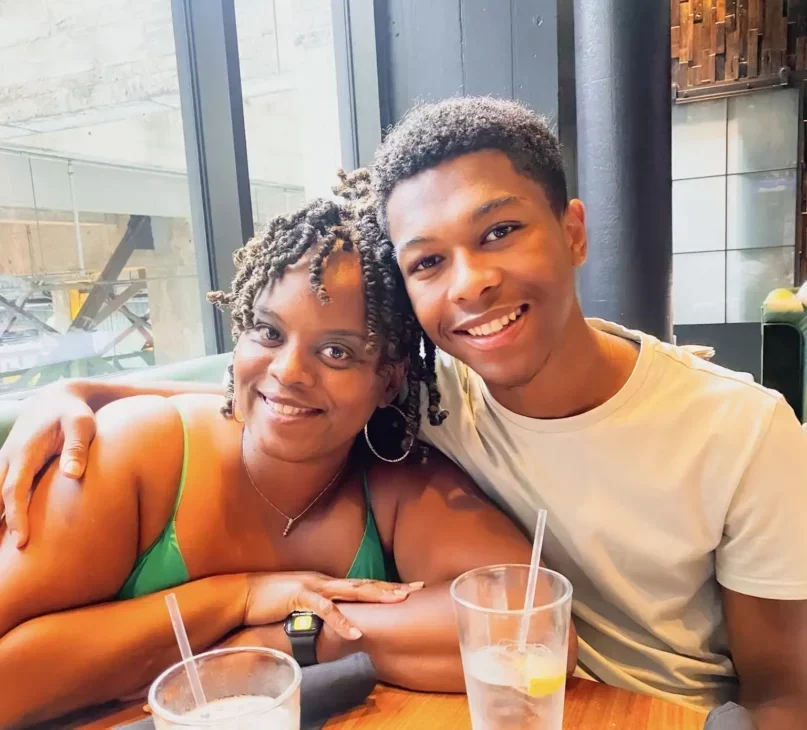Let’s play the “content creator vs influencer” game. Yes, I just made this up but play along! Decide which is the content creator and which is the influencer:
A. A baker who shows how to make his favorite pies on his YouTube channel
B. A baker who showcases his best pie-making tools on his Instagram Stories and gives links to buy them
A. A singer who does duet-with-me videos on TikTok
B. A singer who has a singing podcast using her favorite mic. She's partnered with the mic brand, giving a discount on her podcast to anyone who buys it through her discount code
A. A fitness instructor who posts quick workouts on YouTube Shorts
B. A fitness instructor who livestreams workouts on Facebook and tells you to get all the equipment in his Amazon store
A. A mompreneur who posts business tips on Pinterest which, when clicked, take you to her blog post.
B. A mompreneur who makes blog posts giving business tips and, in a post, gives you a link to buy an ebook for your kids to start a business, like this: Click here (see what I did there 😉)
Do you think you got them all correct? Welp, if you guessed all the A scenarios were examples of content creators and all the B scenarios were examples of influencers then good news! You are correct! Bonus points to you if you guessed that all the people in the B scenarios are both influencers AND content creators. That is, you can be a content creating influencer but not necessarily be an influencer content creator.
Confused yet? Let’s break down the differences between content creator vs influencer
The creator marketing and influencer marketing industry has exploded in recent years, with brands recognizing the power of different social media to reach their target audiences. Influencers, who are typically individuals with a following on social media, have the ability to influence purchase decisions through their content. However, the term “influencer” is often used interchangeably with “content creator,” leading to confusion about their roles and responsibilities.

Me promoting Purple pillows
While both content creators and influencers produce content for social media, there is a difference between the two. Content creators, also known as digital content creators or social media content creators, focus on producing high-quality content that engages their audience. They may create anything from photos and videos to blog posts and podcasts, with the goal of building a loyal following that values their work.
Influencers, on the other hand, while also producing great content, use their platform to influence their followers to make a particular decision. They may promote products or services and offer a discount code or an affiliate link to encourage their followers to make a purchase.
Content creators may also collaborate with brands, but their focus is primarily on creating quality content rather than driving sales. As business owners, these creators might focus more on revenue they generate from ads placed on their content, for instance, vs. audience buying recommended products.
How to Become a Content Creator or Influencer
I became a content creator in 2017 with my kids (then 6 and 10 years old) and hubby, creating scripted videos on YouTube. We weren’t necessarily influencers at that point. We created entertainment as a business. Some of our income came from YouTube Adsense.
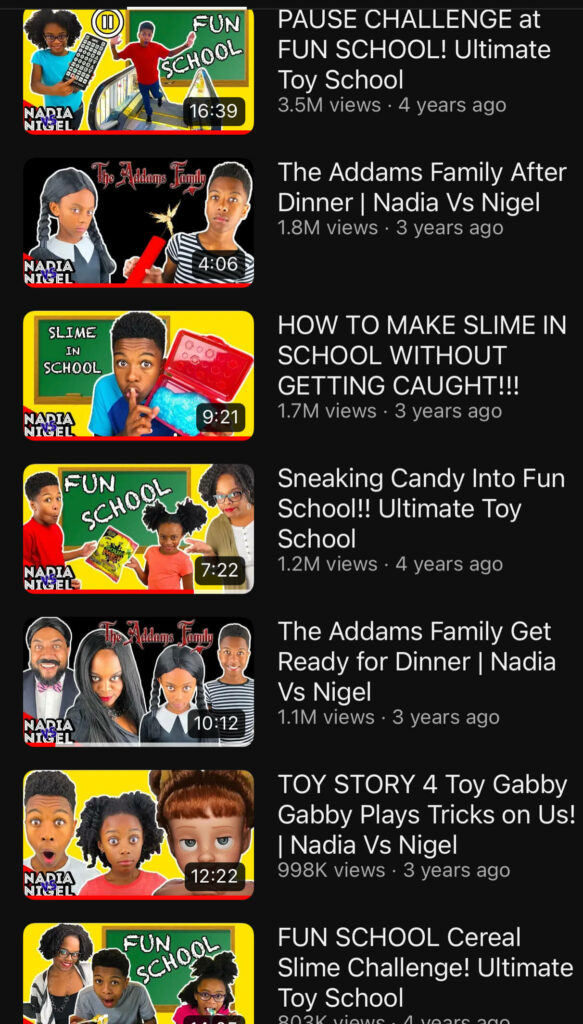
Thumbnails of some of my family’s early YouTube videos
Later we did voiceover work and also launched a podcast…still content creators. But when we added creating merch sold on our website, writing/selling ebooks, creating courses for purchase, brand deals and affiliate sales, I’d say we crossed over into “influencer” territory as our mission was to impact our audiences’ purchase decisions.
So as the industry has evolved, we now see a shift towards a new level of creator – the Influential Content Creator. This term could refer to creators who not only produce high-quality content but also have the ability to influence their followers’ purchase decisions. It’s a valuable addition to the creator marketing landscape, as brands seek out creators who can provide both engaging content and measurable results.


promoting “Peepers” bluelight glasses

Define Content Creator and Influencer
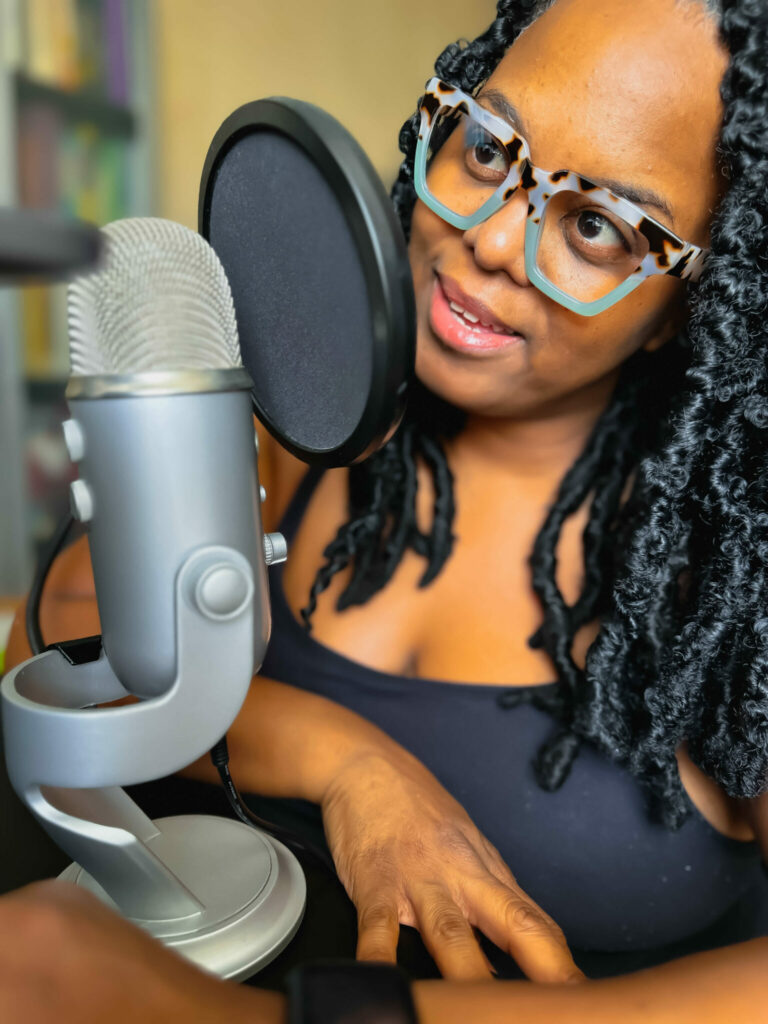
In today’s digital age, there are many different ways to make money online. One way is to create content, such as videos, blog posts, or podcasts. Another way is to become an influencer, which means building a following on social media and then promoting products or services you love to that audience.
Both content creation and influencer marketing can be successful businesses, but they each have their own unique benefits and drawbacks. Content creation is a great way to share your knowledge and expertise with others, and it can also be a great way to build a reputation as an expert in your field. Influencer marketing is a great way to reach a large audience with your message, and it can also be a great way to earn money.
There’s a lot of overlap. Both content creation and influencer marketing can be time-consuming and challenging, require you to create high-quality content on a regular basis, and can benefit if you build and maintain a loyal following.
If you’re thinking about starting a business online, it’s important to decide which type of business is right for you. So let’s dive into the differences.
What are Content Creators?

Content creators are the people who create the content that we consume on a daily basis. They are the ones who write the blog posts, make the videos, and record the podcasts. Without content creators, the internet would be a very blank space. Social media would be…well…media-less.
When you crack your eyes open in the bed every morning and check your TikTok or Instagram account you are seeing the work of content creators who’ve been laboring all through the night creating shiny, fun videos to please your eyes. Ok, it doesn’t work quite like that but you get the idea.
There are many different types of content creators, each with their own unique skills and talents. Some content creators are experts in their field, while others are simply passionate about sharing their thoughts and ideas with the world.
Some content creators are full-time professionals, while others are simply hobbyists who enjoy creating content in their spare time. They either entertain, educate or inform, or some combination of those three.
No matter what their background or skill level, all content creators have one thing in common: they are passionate about creating content. They are the ones who keep the social platforms alive with their creativity and their willingness to share their knowledge with others.
What are Influencers?
Now take everything you just read above about a content creator, add on this next bit of info, and now you have an influencer (aka social media influencers). Influencers are people who have a following on social media, and they use their influence to promote products and services to their followers.
You’ve probably heard that saying that people buy from those whom they know, like and trust. Welp, that sums up why influencers have so much power when it comes to selling products. They give potential customers exactly what brands have always hoped to get through advertising – awareness, confidence and purchases.
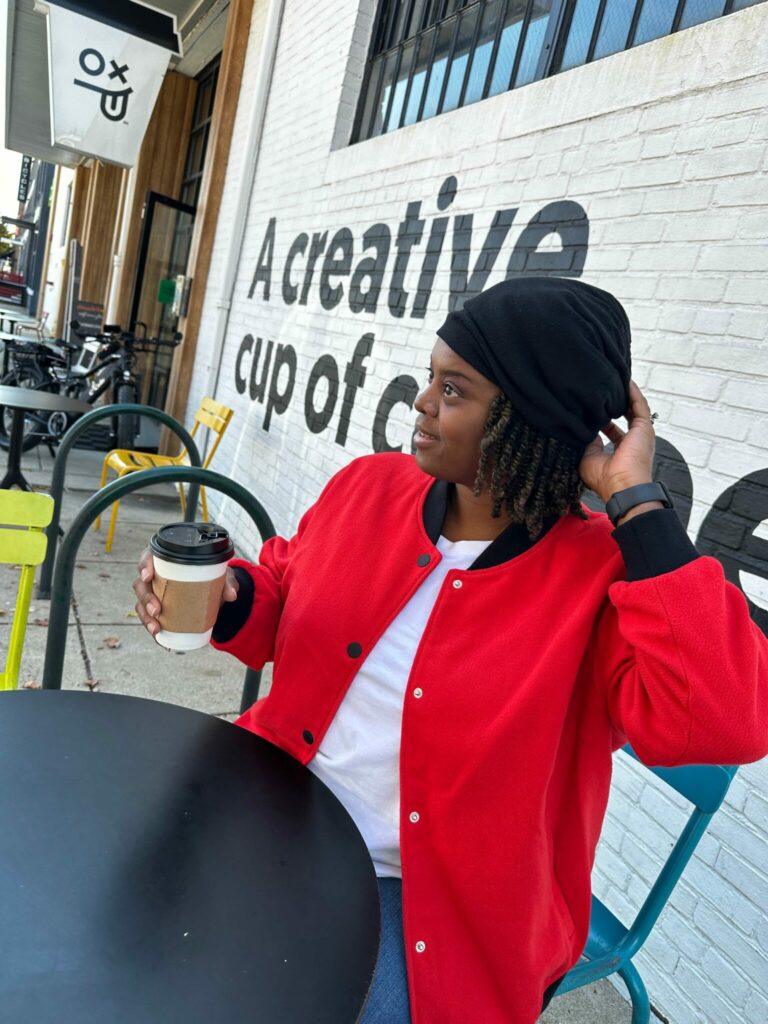
Influencer marketing is a multi-billion dollar industry, and it is only going to continue to grow in the years to come.
In The State of Creator Marketing report put out by Collective Voice – a creator platform where influencers can earn through affiliate sales – they mention that “the creator economy is currently worth over $100 billion globally and is estimated to grow at 35% through 2024.”
There are many different types of influencers, each with their own unique following. Some influencers are celebrities, while others are simply everyday people who have built up a large following on social media. Some influencers are experts in their field, while others are simply good at connecting with people and building relationships.
No matter what their background or skill level, all influencers have one thing in common: they use their influence to promote products and services to their followers, and they can be very effective at doing so.
How to Learn about Becoming an Influencer or Content Creator
A major influence on me as I embarked on this influencer journey was the book “Influencer” by Brittany Hennessy. (How many times did I just use “influence” in that sentence? Are you already sick of the word? Sorry, but we’re not done).
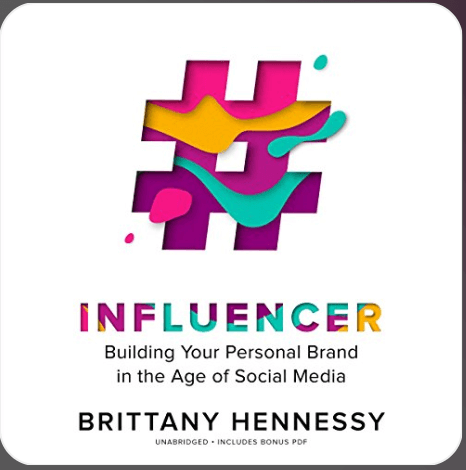
Her book is literally the bible for the influencer industry and I’m not just saying that because I’m now part of her Influencer Business Plan Community.
Brittany was one who hired all the top influencers when she worked at Hearst Corporation and then later became an influencer herself with her book, course, membership, podcast etc, so she’s an expert on both sides of the “coin” when it comes to influencer money.
Needless to say, I highly suggest you pick up her book and join me in her membership group. If you get those, which you should, you’ve just been influenced! Boom! See how easy this can be? As an influencer you simply talk about the products, people or services that you vouch for. If the audience buys because of you, through your links, you get a kickback, earning a small percentage of the sale. That’s being an influencer.
How do Content Creators Create Brand Awareness
Building up your own brand as a content creator is a whole different ball game than building up someone else’s brand as an influencer. So, let’s compare and contrast the two.
As a content creator, your main focus is on your own personal brand. You’re the star of the show and the one who needs to stand out in the digital world.
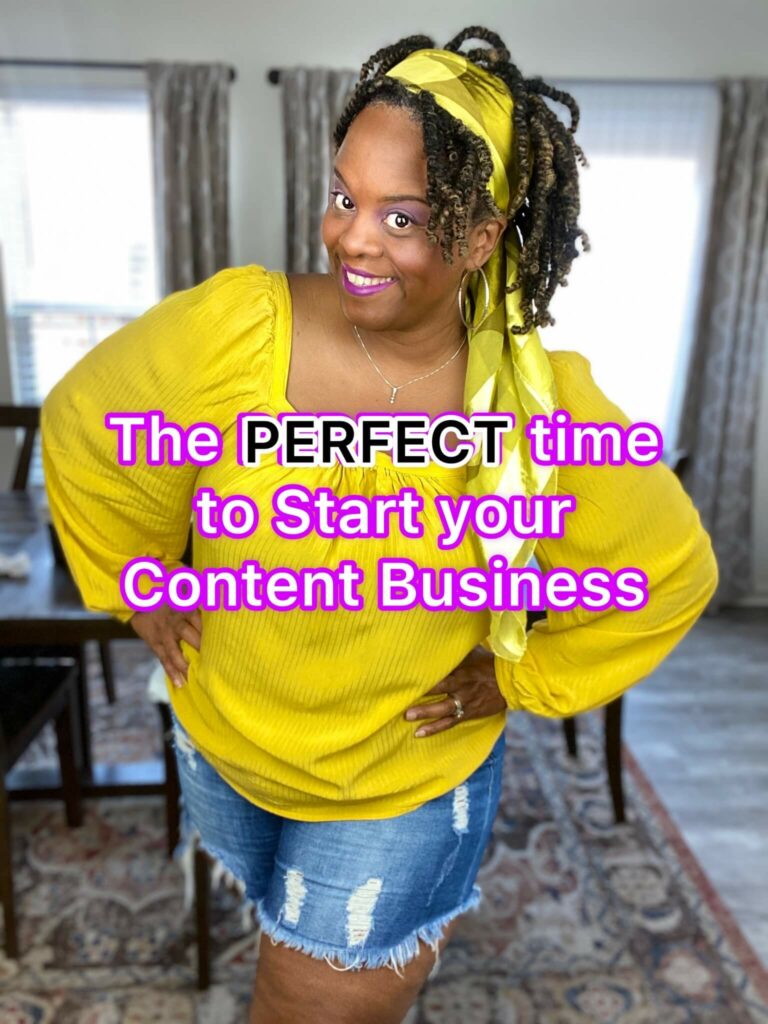
You create your own content, manage your own social media accounts, and do everything you can to promote your brand. You want people to recognize your style, your voice, and your unique way of doing things. The similarities between the two are obvious – both creators and influencers need to be active on social media platforms and create engaging content.
The key difference is that creators prioritize building their own brand. Influencers focus on building up their own brand as well but also prioritize building up the brand (the product or service) they are showcasing.
In the digital world, personal branding is everything. You need to be your own creative director, graphic designer, and content producer. Whether it’s through blog posts, YouTube videos, or social media, you need to make sure your content is on point and resonates with your target audience. Your social media accounts are your storefront, and you need to make sure they’re always up to date and reflective of your personal brand. Who are you and what do you care about?
Through “about me” posts, day-in-the-life content or simply through your consistent showcase of your style, your talk and your thinking, your audience will get to know you and decide if they want to stick around.
How do Influencers Create Brand Awareness
When you’re partnering with a brand as an influencer, your focus is on the particular brand you’re promoting. You need to understand their needs and goals, and create content that aligns with their vision. You’re essentially becoming a brand ambassador and need to be able to convince potential customers to buy the product or service.
You might work closely with creative directors, graphic designers, and photographers to create professional-quality content that showcases the brand. Many times you will hold all of those roles on your own. You may do product reviews, blog write-ups, photo or video content to give your audience a better idea of what the brand is all about.

Instagram has become a go-to platform for influencers and content creators alike. Instagram content creators have found different ways to promote their personal brand and partner with other brands at the same time.
From sponsored posts to affiliate links, there are plenty of opportunities to monetize your content on Instagram. Since short form video content has become increasingly popular on the platform many creators have started using Instagram as THE tool for content marketing. In fact, The State of Creator Marketing reports that Instagram brings in 72% of earnings for creators.
On the other hand, YouTube is still a top platform for content creation, with many YouTube influencers now becoming YouTube stars. The draw here is that, while short-form content is trending, longer form content (typical of YouTube) has a forever shelf life. Think the difference between a snack vs a meal. Brands and content creators alike can get more bang for their buck (or time) on YouTube.
One method I use to maximize my time as a content creator, while diving into the now-trending short form content, is to chop up my longer form YouTube videos into multiple pieces of short form content for other platforms like Instagram and Pinterest.
What is UGC
Influencers also build their business through UGC. UGC means User-Generated Content, which is created by influencers, not companies. It refers to any form of content, such as images, videos, reviews, or social media posts, that is created by users of a brand or product, rather than by the brand itself. It can be shared by the influencer or by the brand.
Brands like to use influencer creators to leverage UGC because it it appears to be made by regular people showcasing their real experience with, and opinion of, the product. This can increase trust and engagement with their audience. UGC can also save brands time and resources by allowing influencers to create and share content on their behalf, as well as providing a more diverse range of content for their audience.
How do Influencers and Content Creators Earn Money
Alrighty folks, now let’s talk about the juicy stuff – marketing strategy! …that is, so we can get to the money!
When it comes to content creators vs influencers, there are some similarities and key differences in their approach to marketing. First up, we have marketing campaigns. Both creators and influencers can land some sweet brand deals and get that cash flowing. But, there’s a little bit of a twist.
Content creators often focus on creating their own content, building up their personal brand, and using that brand to attract sponsorships and partnerships. On the other hand, influencers typically work with a particular brand to showcase the brand’s products or services to the brand’s audience. It’s like being a hype-person for hire!
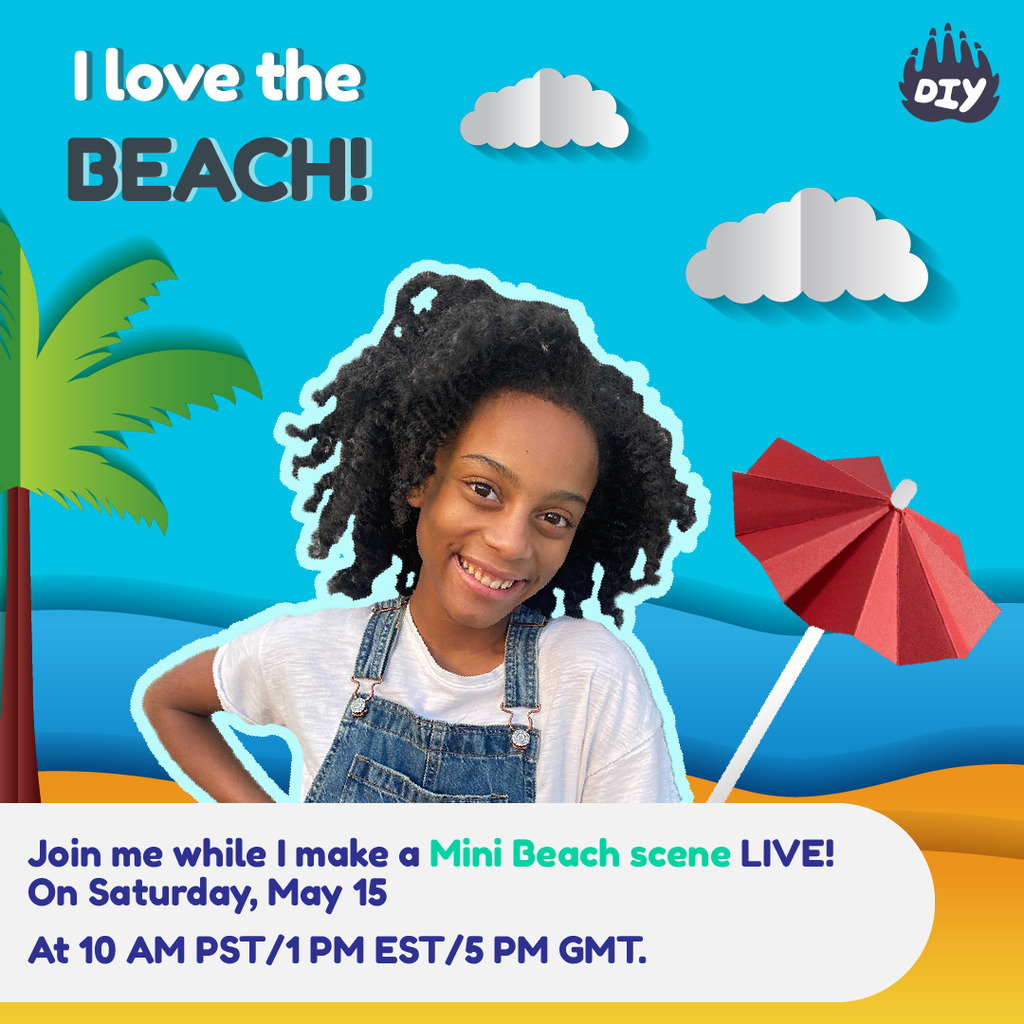
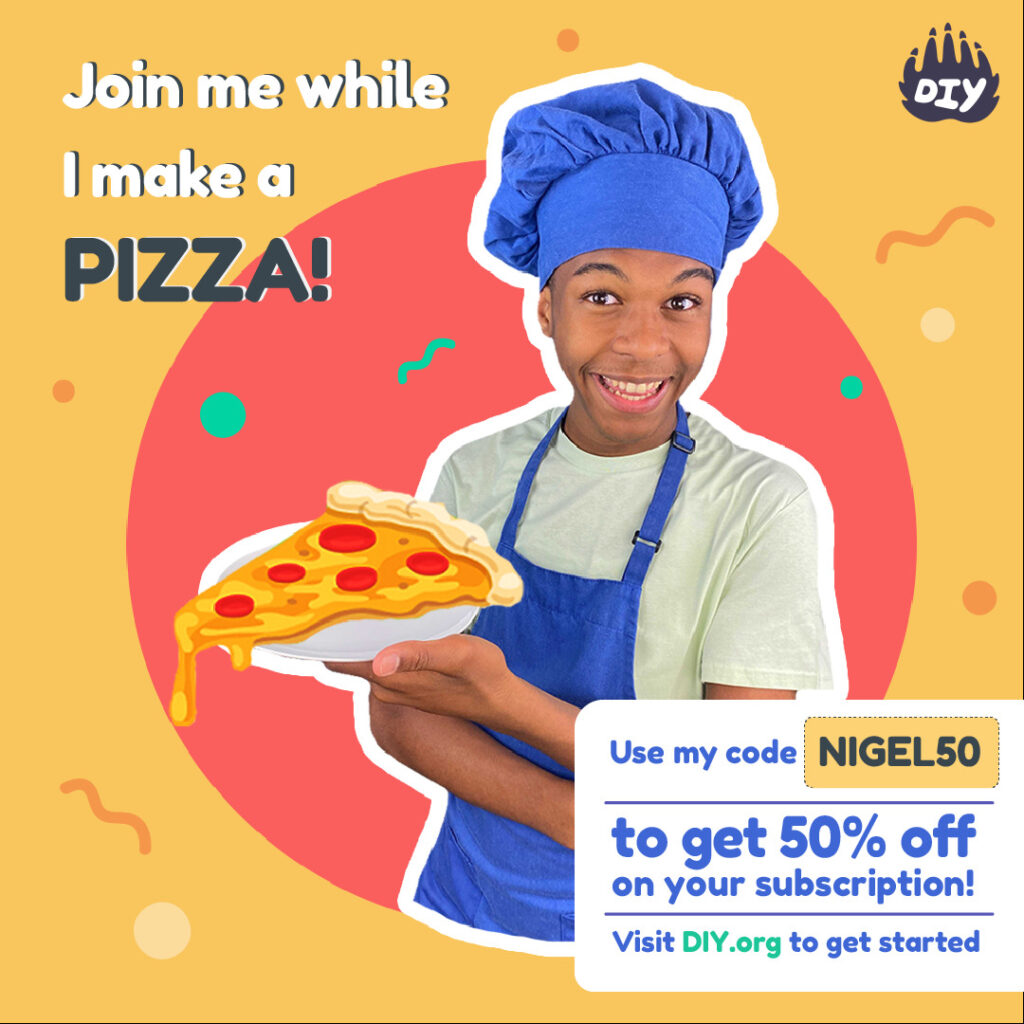
Of course, digital media is a huge part of any marketing strategy these days. Content creators and influencers alike are constantly pumping out high-quality content on social media platforms. But, where influencers have a little bit of an edge is in their ability to sway the opinions of their followers. Influencers are called “influencers” for a reason, after all.
And finally, we have the influencer marketing agency. They are like the matchmakers of the digital world, connecting brands with the perfect influencer for their product or service. Influencer agencies provide resources and representation for influencers of varying sizes.
For the record, this is how the categories currently break down by follower count:
Nano influencer: 100-10K
Micro influencer: 10K-50K
Mid-tier influencer: 50K-500K
Macro influencer: 500K-1M
Methods Both Influencers and Content Creators use to Earn Money:
- Brand deals: Partnering with a brand to promote their product or service in exchange for payment or other compensation.
- Sponsored content: Creating content that promotes a brand or product in exchange for payment.
- Sponsored events: Influencers are paid to attend and promote events on their social media accounts.
- Affiliate marketing: Earning a commission by promoting a product or service and providing a unique link to purchase.
- Ad revenue: Earning money from advertisements placed on content, such as YouTube videos or blog posts.
- Merchandise sales: Selling products, such as clothing or accessories, with (or without) their brand or logo on it.
- Donations: Accepting voluntary payments from fans and followers.
- Crowdfunding: Content creators can use platforms like Patreon or Kickstarter to receive funding from their fans to support their work.
- Speaking engagements: Being paid to speak at events or conferences.
- Consulting: Providing advice and guidance to others in the industry.
- Coaching and courses: Creating and selling online courses or coaching services to teach others about their area of expertise.
- Licensing and syndication: Selling the rights to their content for use in other media, such as streaming services or TV shows.
- Digital sales: This can include selling digital products such as e-books, courses, or digital artwork.
- …and more!
How Important is Audience Size if you are a Creator
One of the main differences between influencers and content creators is how they approach their target audience. Influencers often focus on building a large following on social media, whereas content creators may prioritize developing a loyal and engaged audience in a specific niche.
Successful content creators understand their audience and create content tailored to their needs and the specific interests of their followers. They may work hard to cultivate a loyal following who are highly engaged with their content, even if their overall follower count is smaller.
On the other hand, influencers may prioritize engagement rate and large followings in order to appeal to a broader audience and maximize their brand partnerships. While micro-influencers with smaller followings may have a more dedicated and engaged community, larger influencers may be better suited for brand campaigns that require a wider reach.
How Small Creators Can Earn Big
Imagine this scenario: say you’re an influencer with 100K followers. As an influencer who earns money through affiliate sales it’s to your advantage to have a large audience like this. You’ll want a lots of people to see you promote, say a purse for instance, because you’ll get a small percentage of each sale. That might only be a couple dollars per sale so you’ll need to push to create a large audience to multiply your profit potential.
Now imagine you’re a content creator with 1000 engaged followers. This size audience might look small in comparison but one way you monetize is through coaching, which costs your clients hundreds or thousands per session. You could easily surpass an influencer’s income even though your audience is much smaller.
This scenario could work in your favor whether you are an influencer or a content creator. The key is how you choose to monetize. But don’t let follower count determine your expectation of success. Both influencers and content creators offer unique benefits and can be effective in their own ways.
What is Engagement Rate
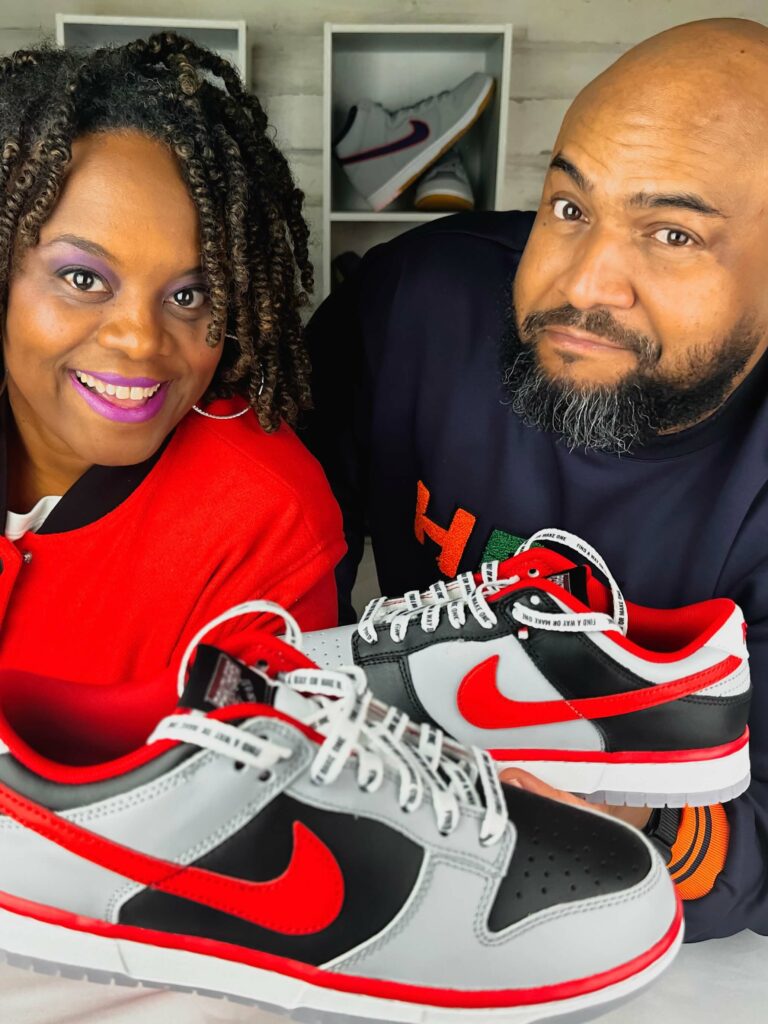
Engagement rate is like the popularity contest of social media. It tells you how many people are interacting with and diggin’ your content. You calculate it by dividing the number of likes, comments, and shares by the number of people who saw it, then boom – you got your engagement rate, baby. A high engagement rate means your content is super interesting to your followers. Think of it like getting a lot of high-fives from your squad – it feels good, right?
When it comes to engagement rate, content creators typically have a more consistent and loyal following, with higher engagement rates on average. This is because their followers are often interested in their content and value their opinions, which leads to more authentic engagement.
On the other hand, influencers may have a larger following, but their engagement rates can be more variable depending on the nature of their content and their promotional activities.
However, it’s important to note that engagement rate can vary greatly depending on the individual creator or influencer and the type of content they produce. So, it’s always a good idea to look at the specific engagement rates of each creator or influencer to get a better understanding of their performance on social media.
What is a Good Engagement Rate
You can use an online calculator to determine your engagement rate which is much easier than calculating it yourself. I used the engagement calculator on the website, Phlanx. Here are the averages for Instagram.
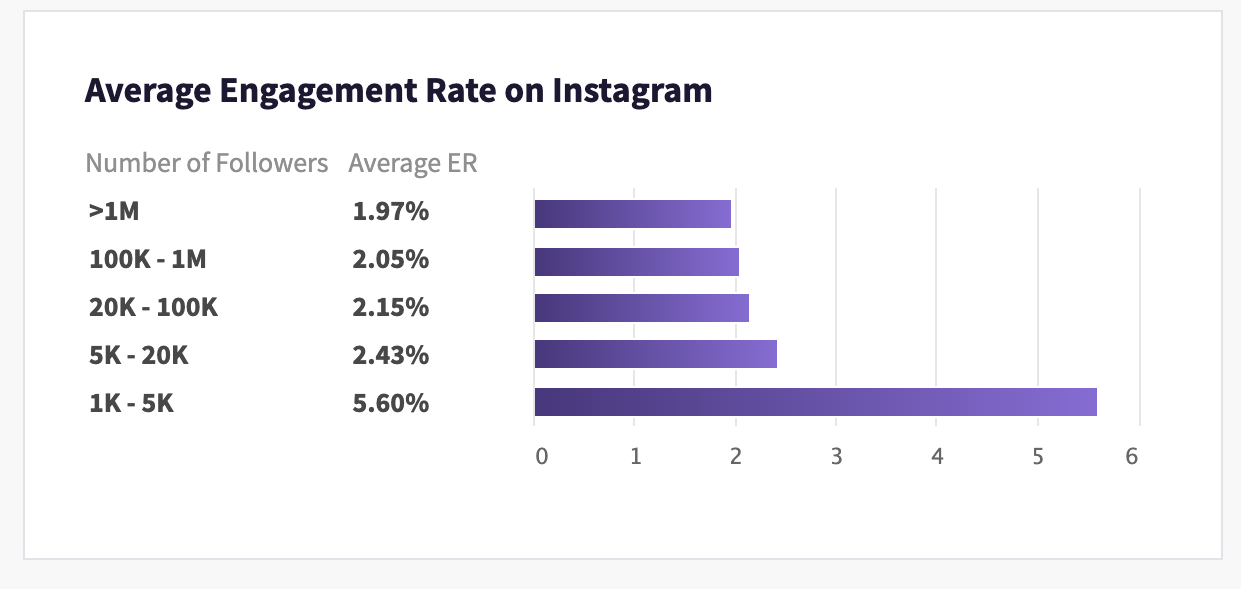
My hubby, Daddy Seed, is a content creator in the sneaker niche. As of this writing his engagement rate is right above target for his follower count.
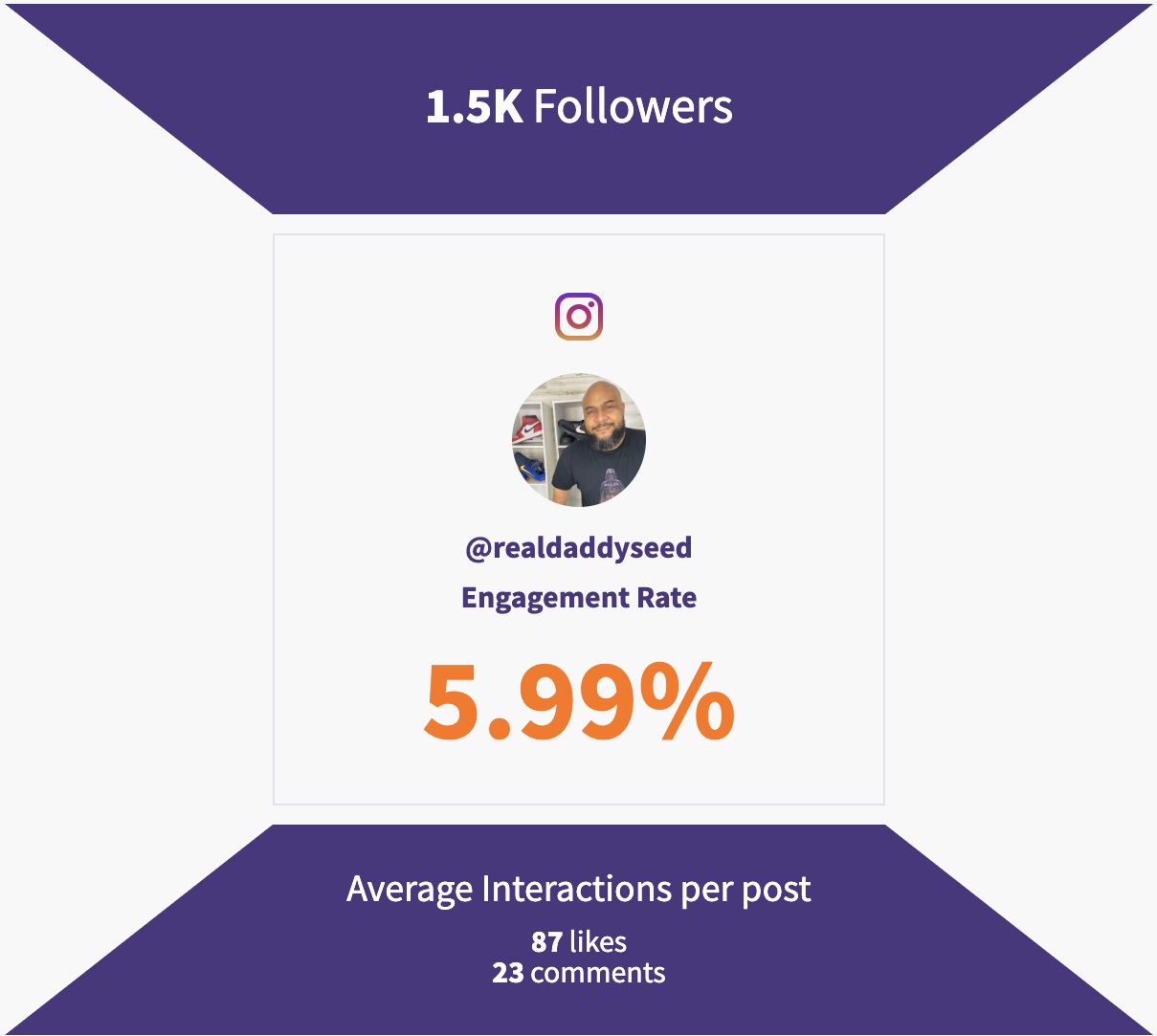
Note that the more followers you get the more the engagement rate typically decreases. Phlanx gives an example through the Instagram accounts of some well-known celebrities…

How to Raise your Engagement Rate
As a content creator or influencer it’s good to keep your engagement rate high. Brands typically want to know your engagement rate as that can be a good gauge of how many people will see the content they partner with you on.
Throughout the day Daddy Seed will engage other creators’ content in his niche. He will like and comment, and he’ll even share their content on his platform. Repeated actions like this cause those other creators to see him, appreciate his engagement and cause them to engage on his content as well. He has created a true community in his niche this way. This is the law of reciprocity 101 – we pay back what we get from others.
Two things to note here:
- he is genuinely interested in the content he is engaging on
- he is consistently doing this every day
Should I Become an Influencer or Content Creator
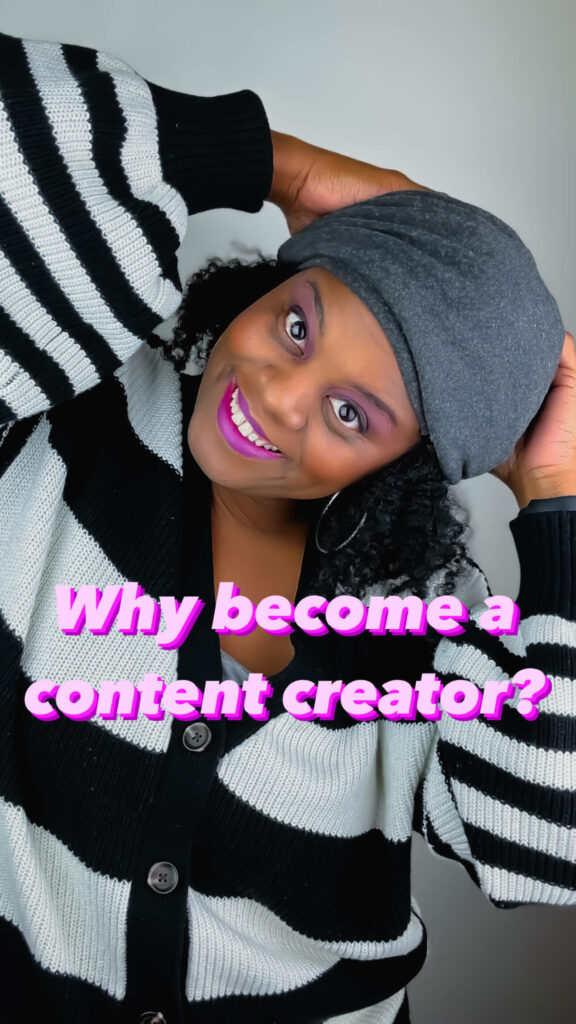
In conclusion, whether you are interested in becoming an influencer or a content creator, there are several factors to consider. It takes hard work to build a successful personal brand and to cultivate a loyal audience, but the rewards can be great.
You will be self-employed which means you are working on your own time and can typically work from anywhere in the world. No need to ask permission to take days off or travel. Also, the sky’s the limit when it comes to earning potential.
The main difference between influencers and content creators lies in their approach to brand partnerships and their engagement with their audience.
When choosing which path to pursue, it’s important to consider your target audience, the brand’s needs, and your own personal strengths and interests. Whether you’re catering to a niche or a larger audience, engagement rate and community engagement are crucial to success.
And don’t forget, it’s okay to start small and grow at your own pace. With the right mindset and unique content, anyone can become a successful content creator or influencer.
Let me know which one you plan to pursue. And if you want tips on how to do it while balancing being a mom, or how we do it as a family, stay plugged in the my blog for 1. tips to grow a content creator business as a family, 2. mom life adventures, 3. wife life adventures, and 4. self care (because we’re going to need some pampering after those first three).
Let’s keep building online businesses, one family at a time.
Nikki (Mommy Seed)


